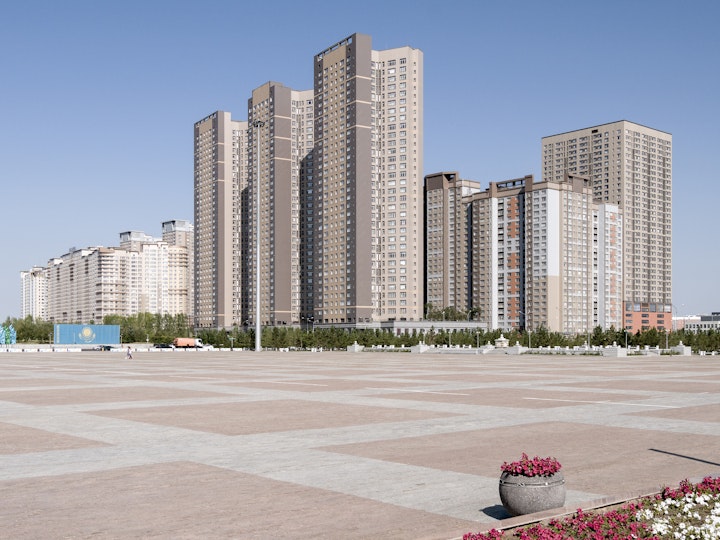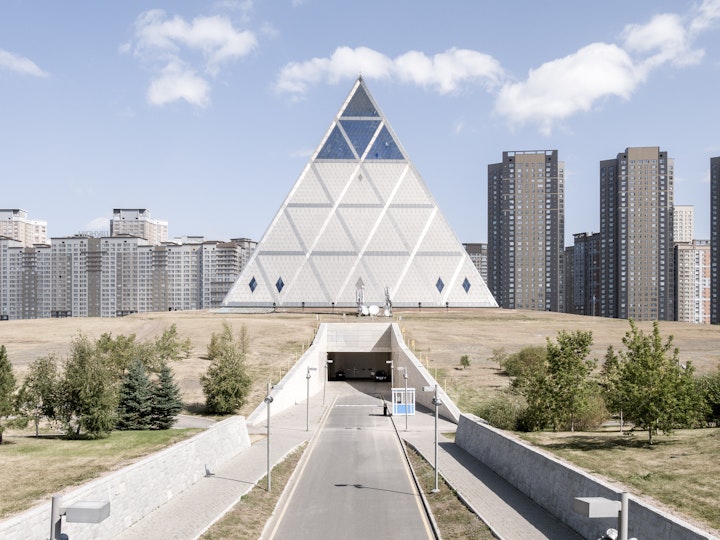Astana, Kazakhstan
personal work
In 1991, oil-rich Kazakhstan – sandwiched between Russia and China – was the last former Soviet republic to declare independence. Astana became its new capital in 1998 (the city's chief claim to fame prior to this point was as the site of a notorious Stalin-era Gulag).
Situated in a flat, semi-arid steppe region, Astana experiences an extreme climate which makes it an unlikely choice for the country's capital. Temperatures of -35 celsius are not uncommon in winter, while summers are blisteringly hot at +35 celsius.
Like Canberra, Washington DC and Brasilia, Astana has been conceived as a planned capital city. It is the vision of dictator president Nursultan Kazarbayev. However, the original masterplan by Japanese architect Kisho Kurokawa has been largely ignored. By the time of my visit in 2017, Astana was an alienating metropolis of urban motorways, gigantic apartment complexes, vast car parks, futuristic statement buildings by international starchitects and empty building lots awaiting development.
In 2019, Astana was renamed Nur-Sultan in honour of the departing president.

















